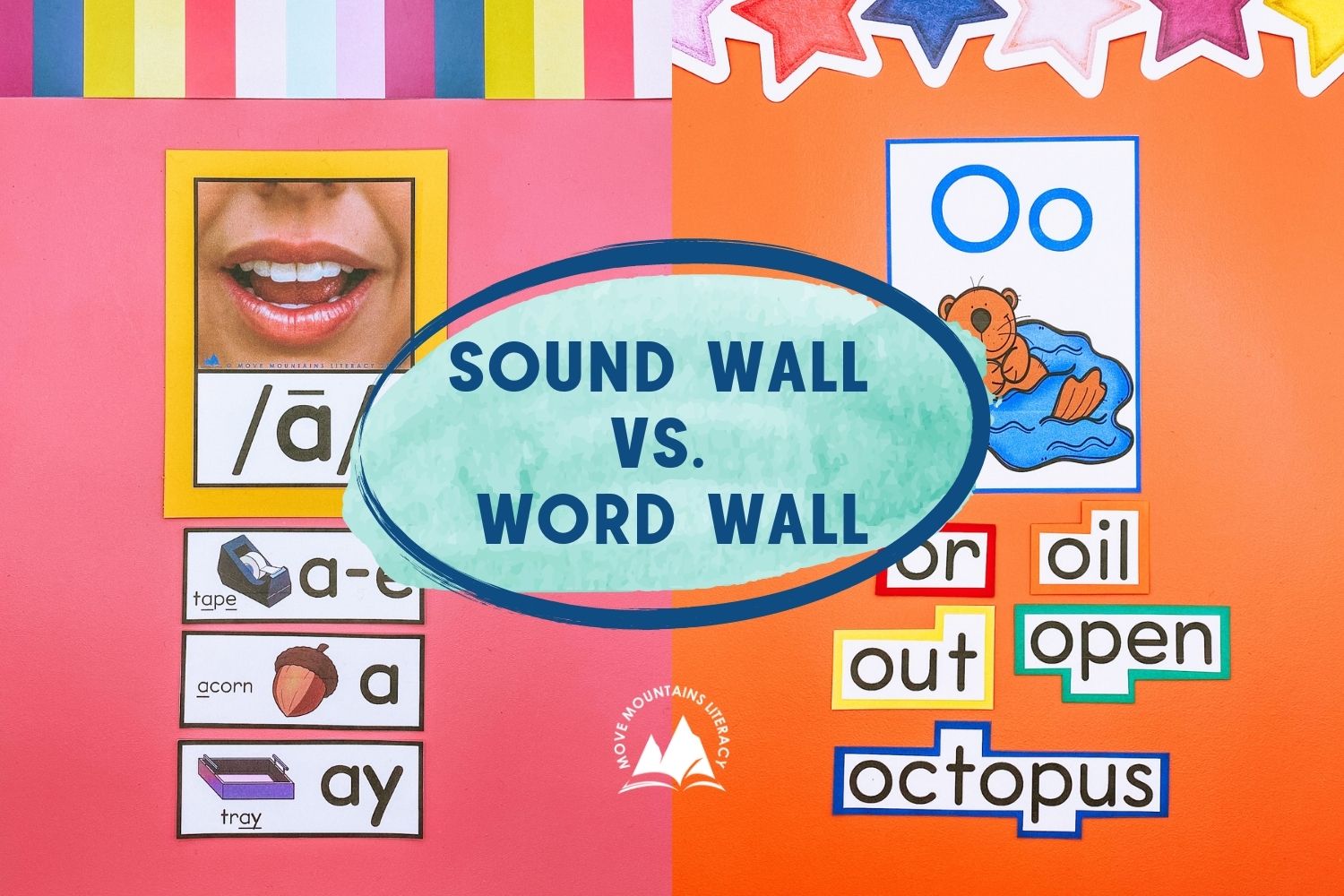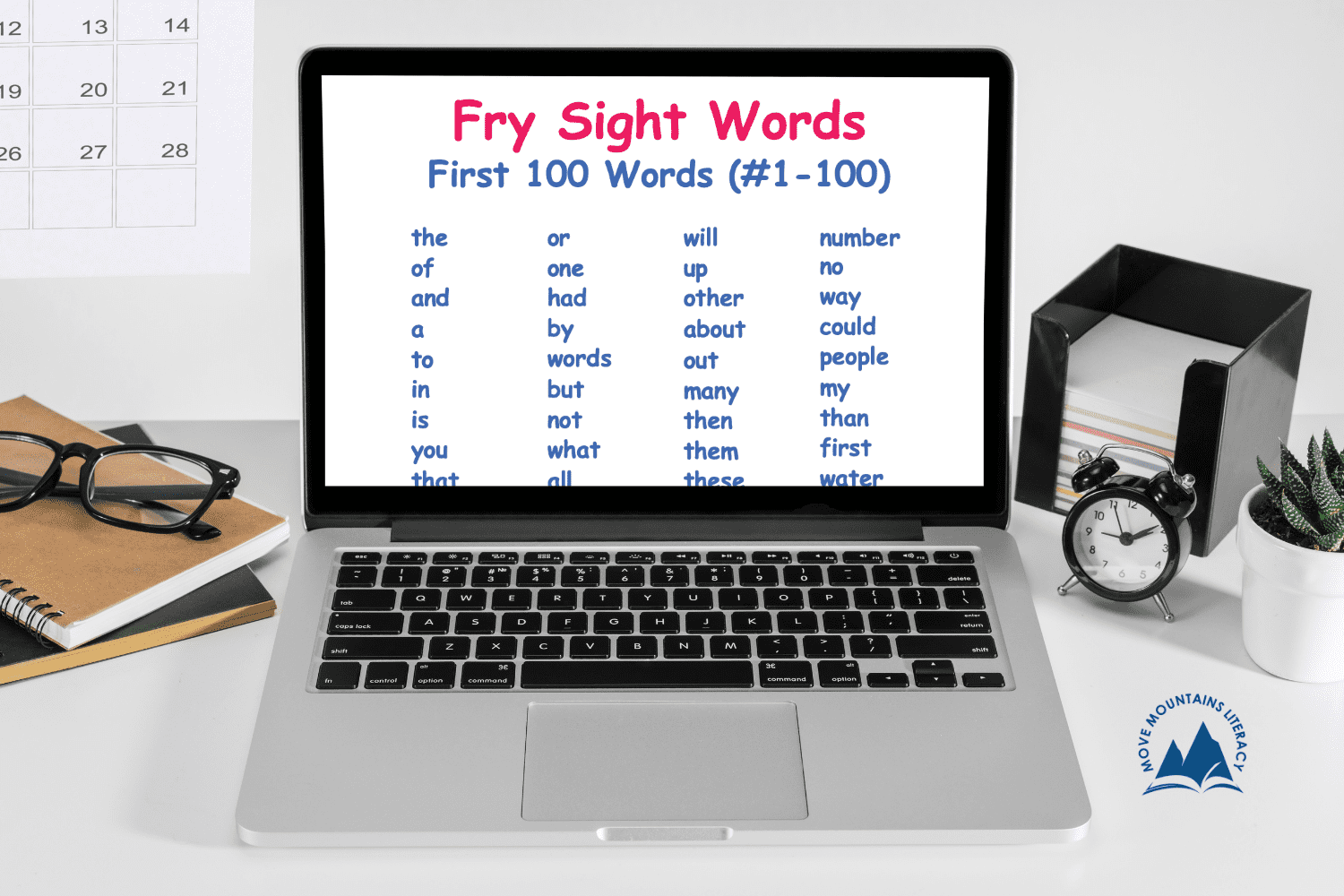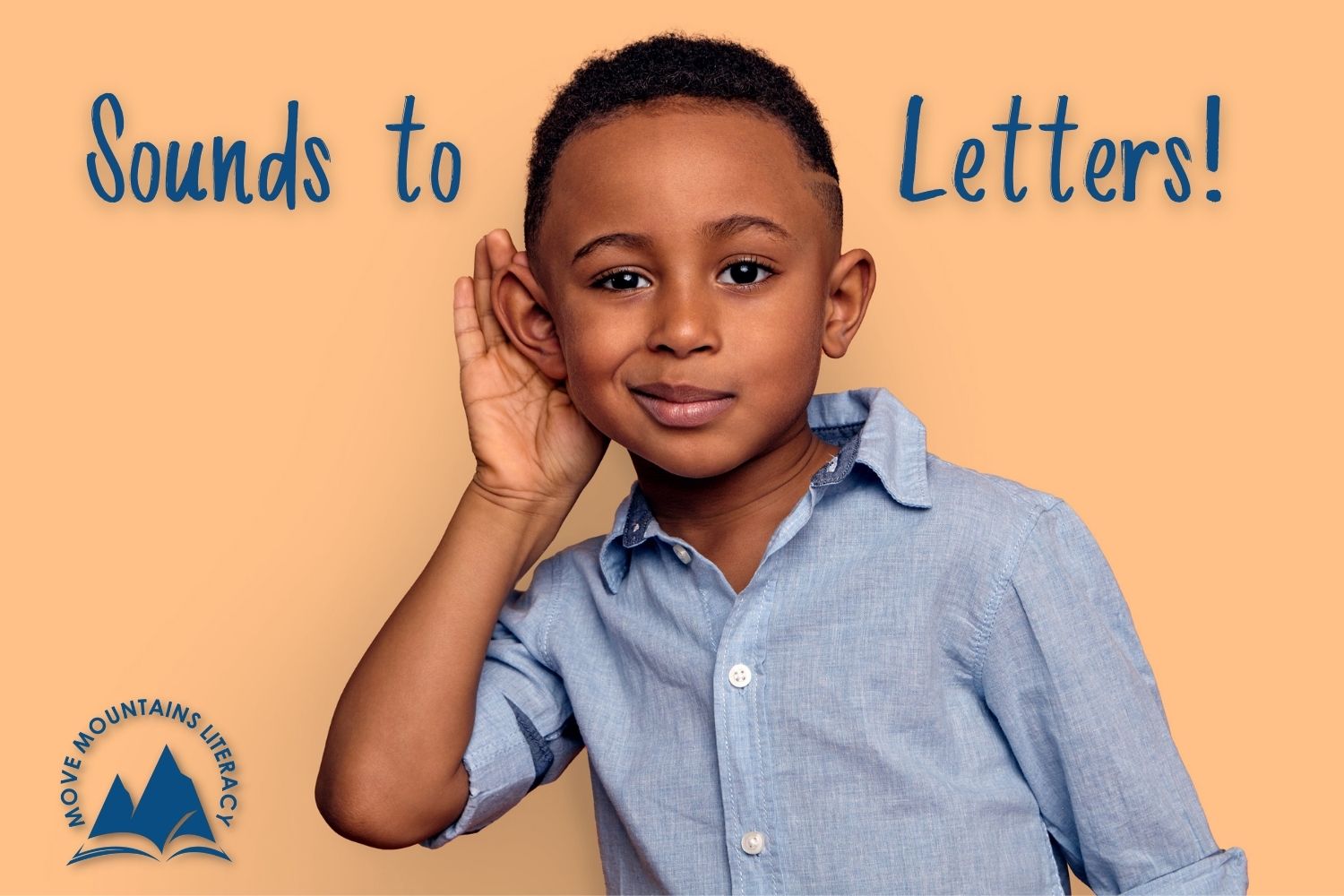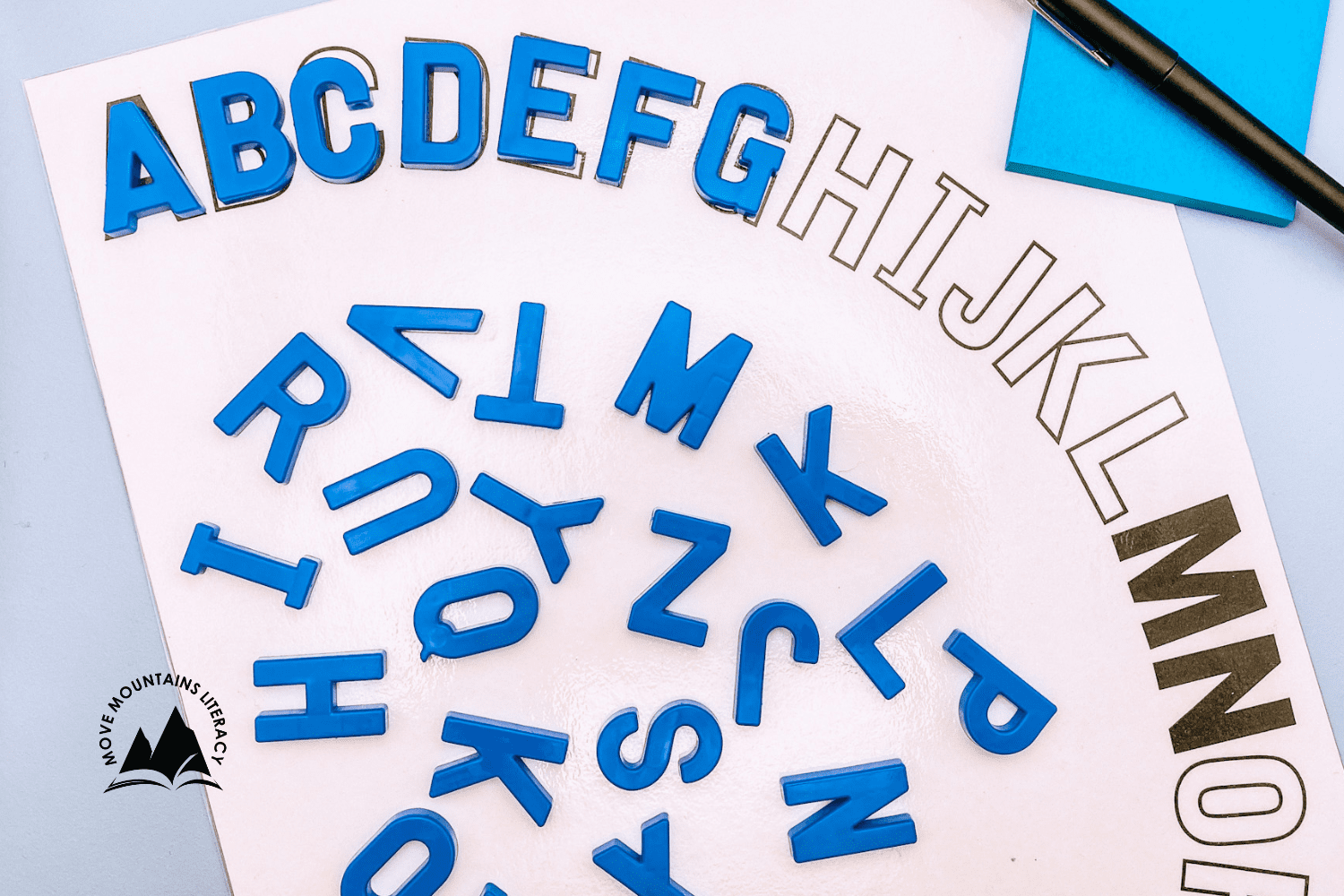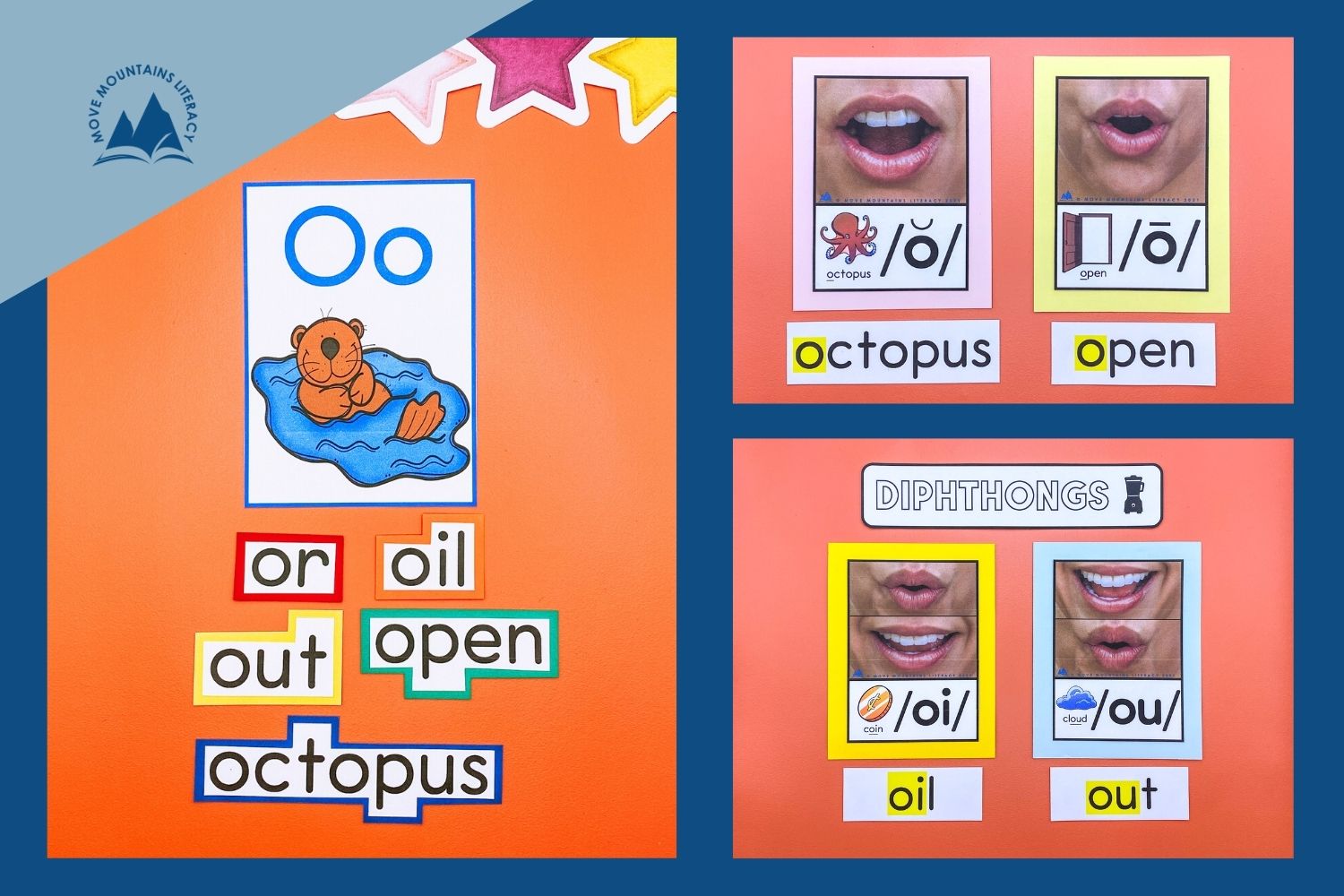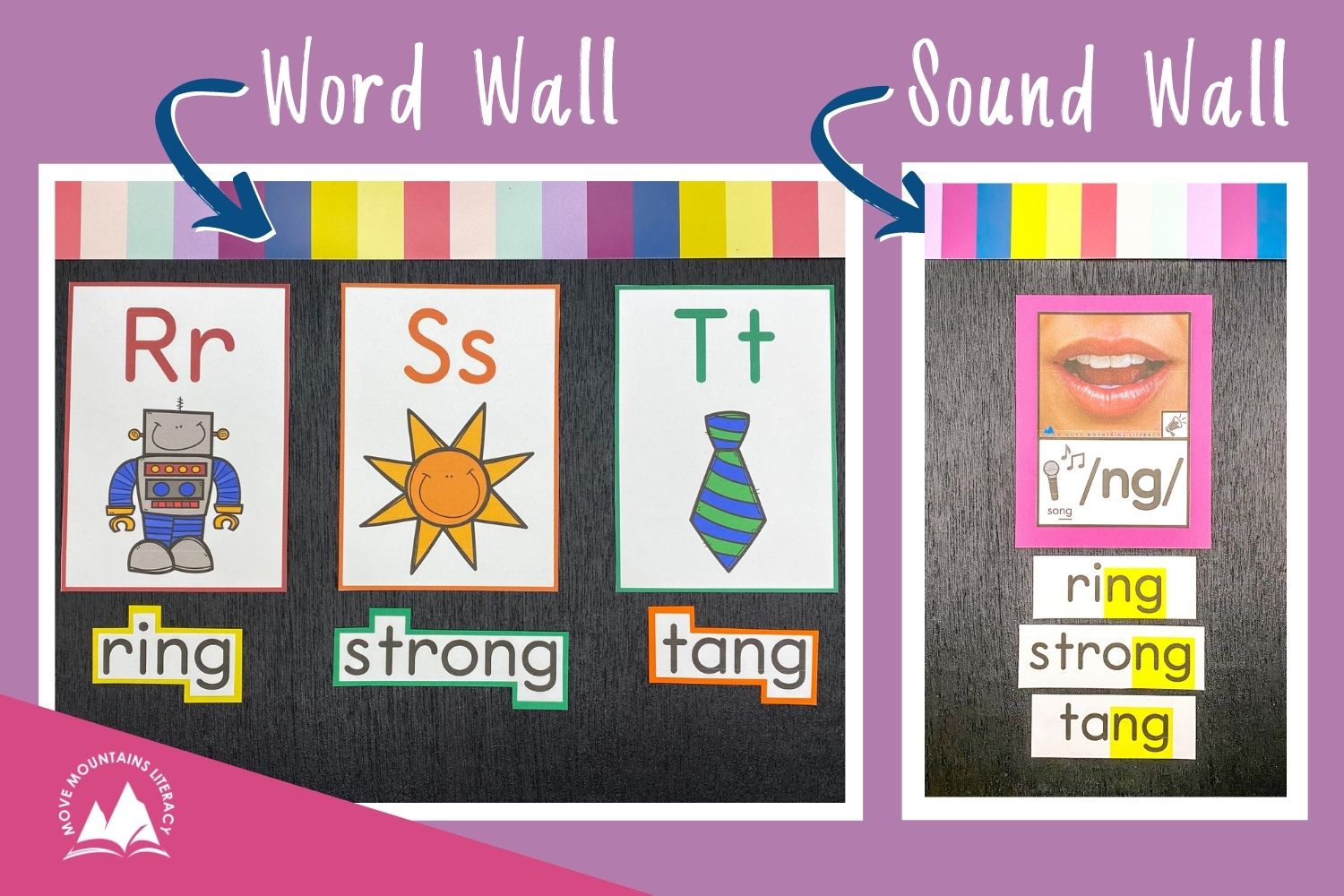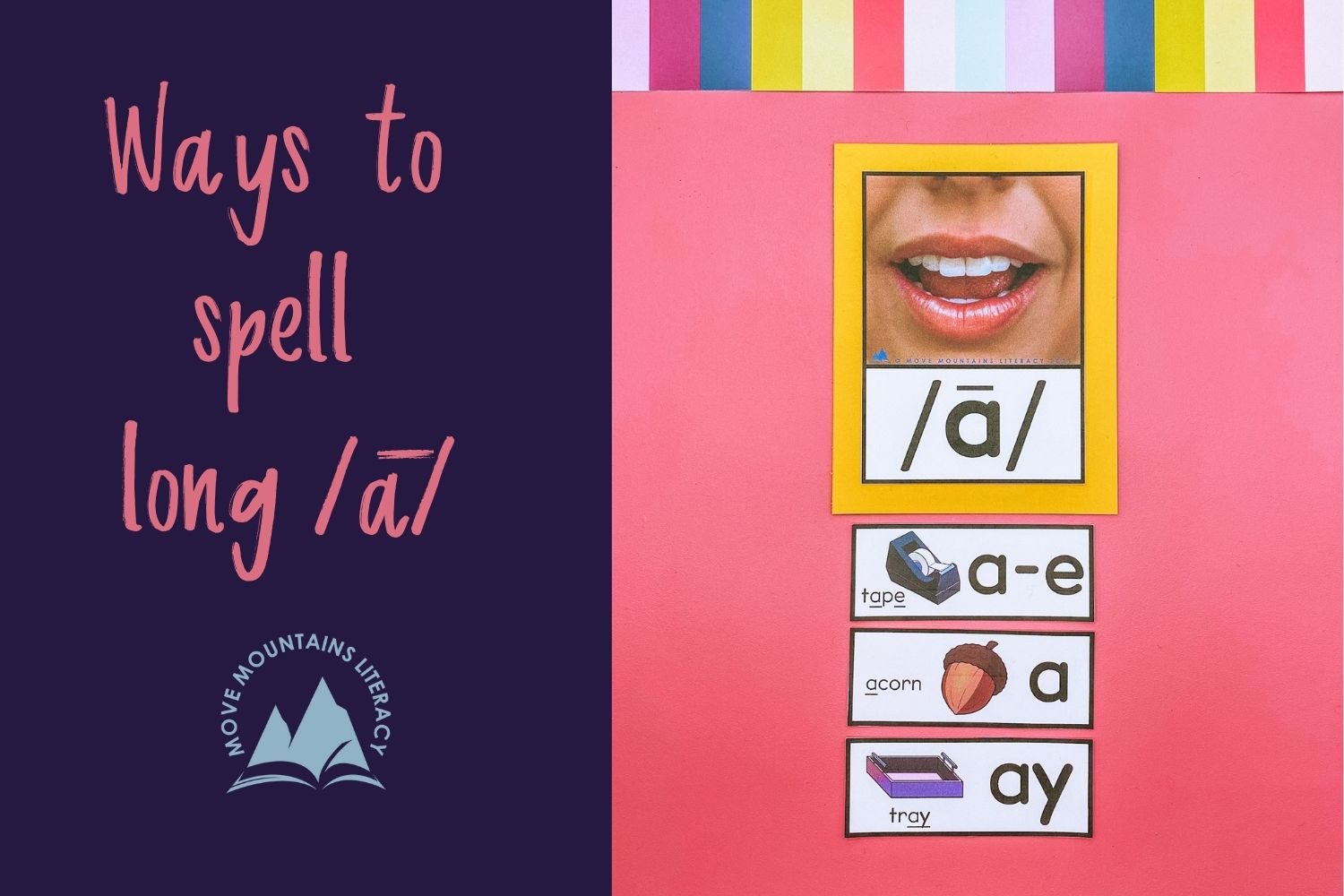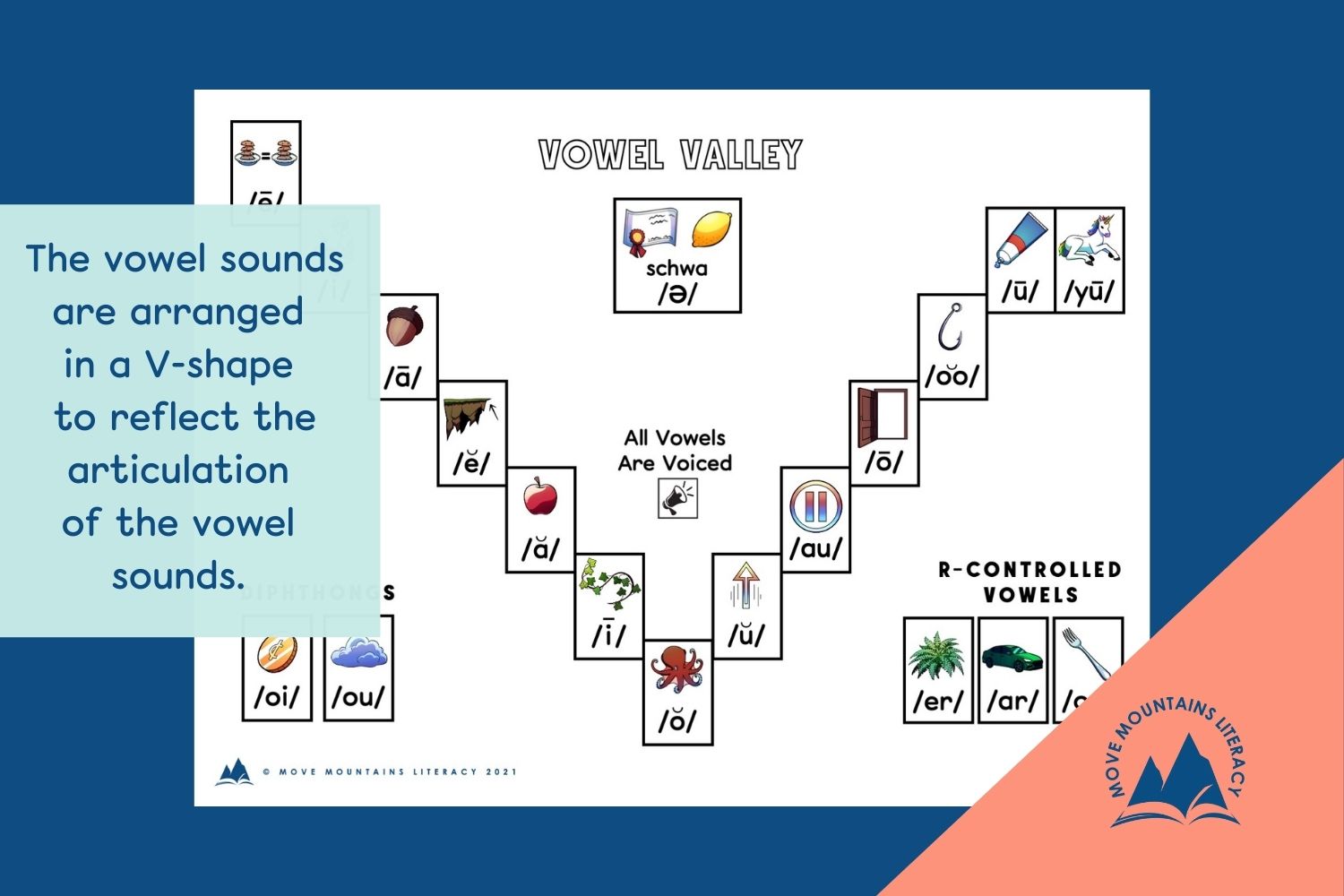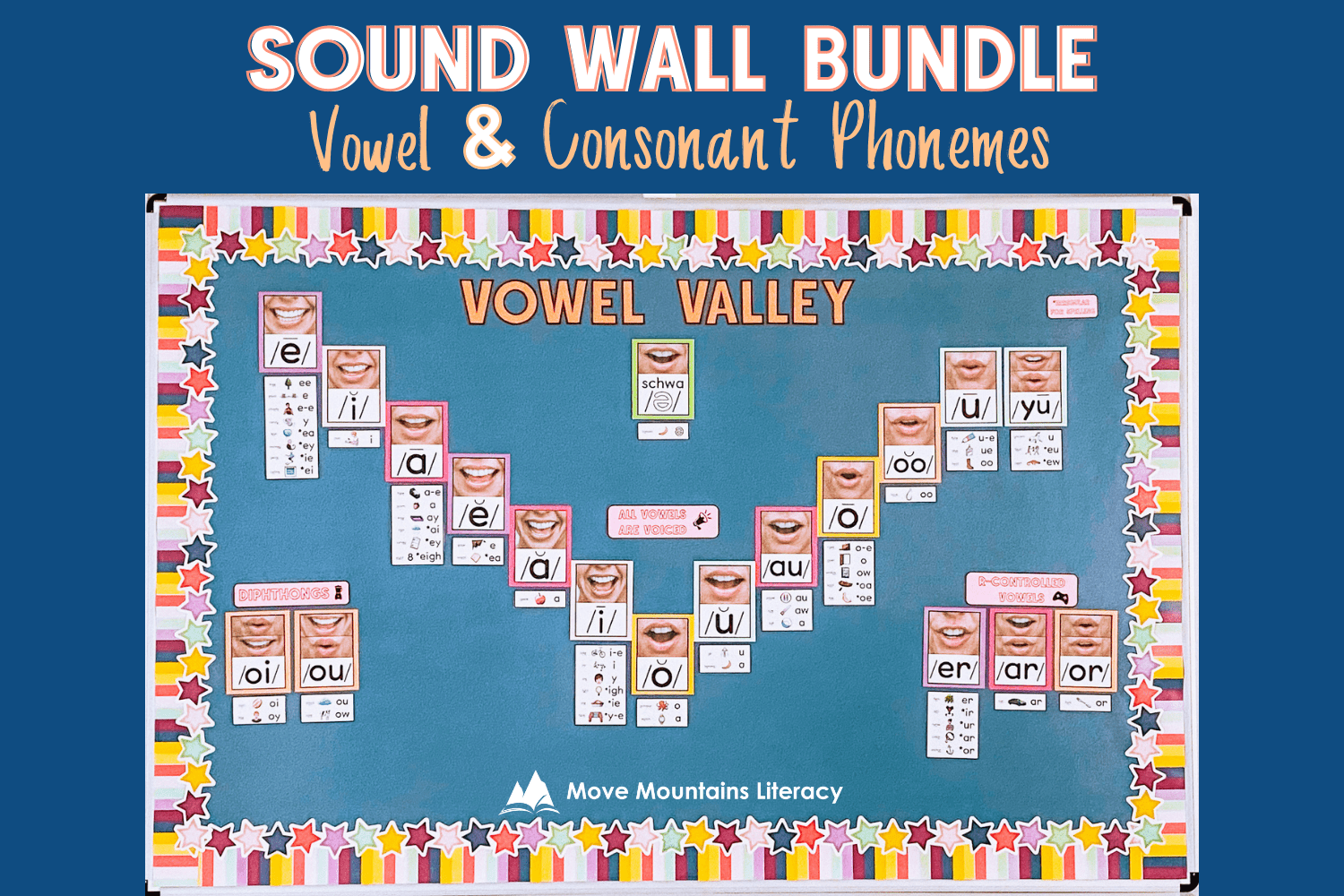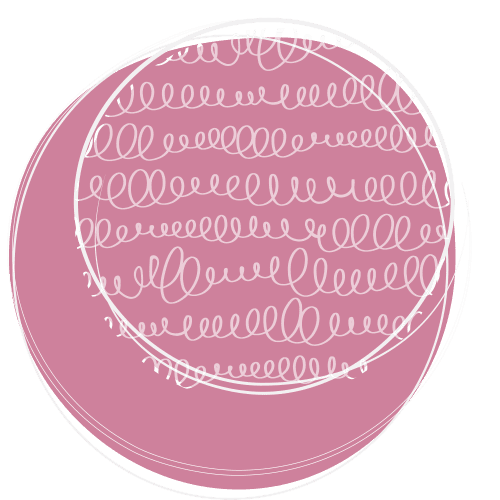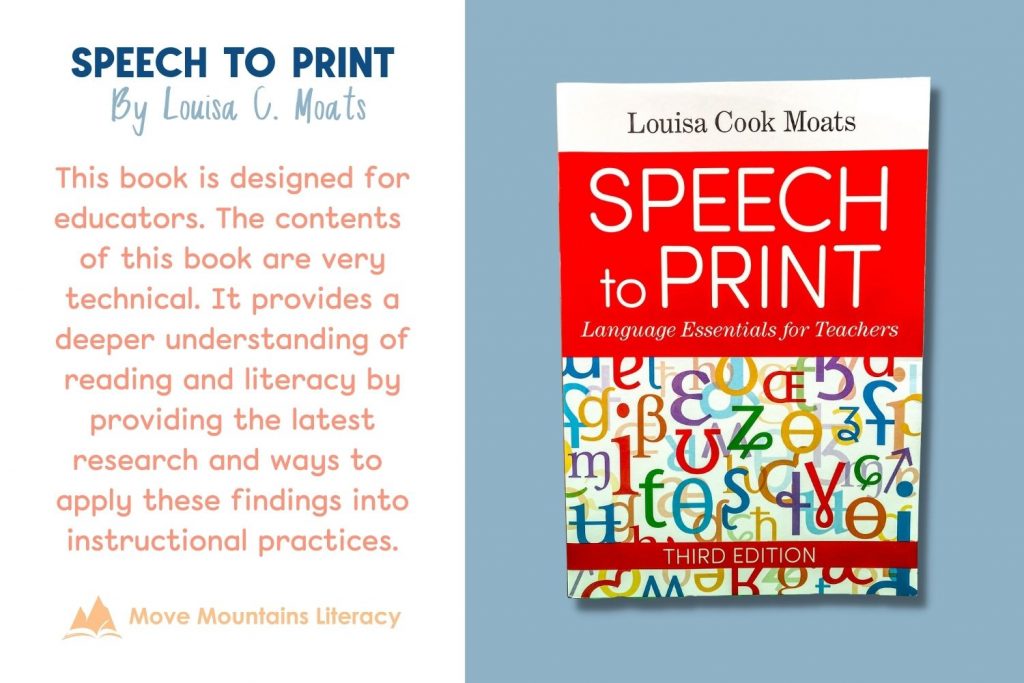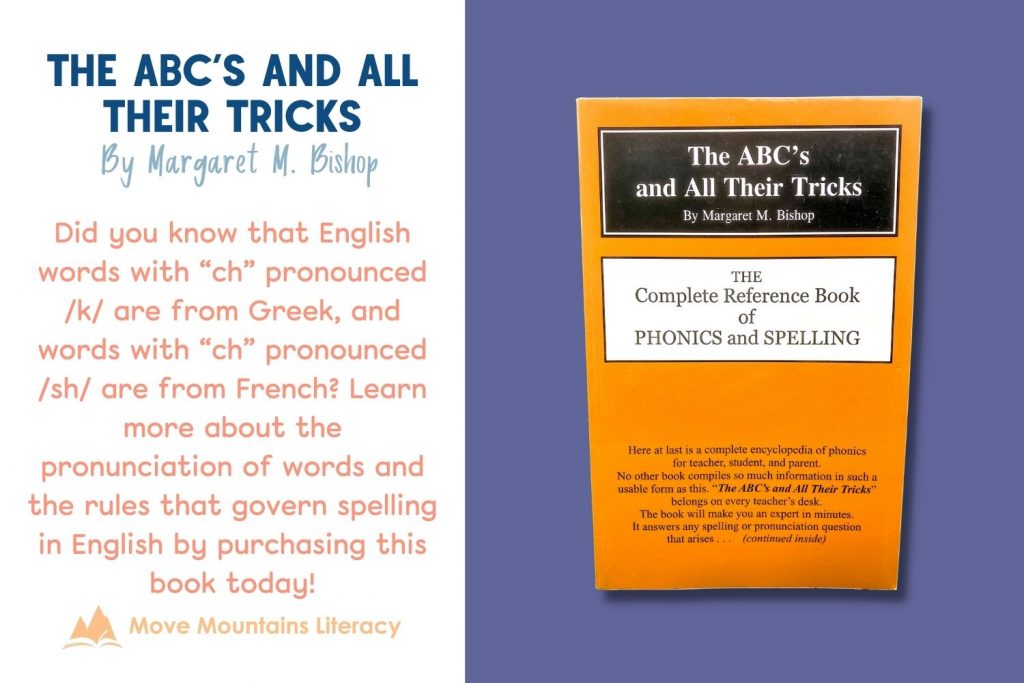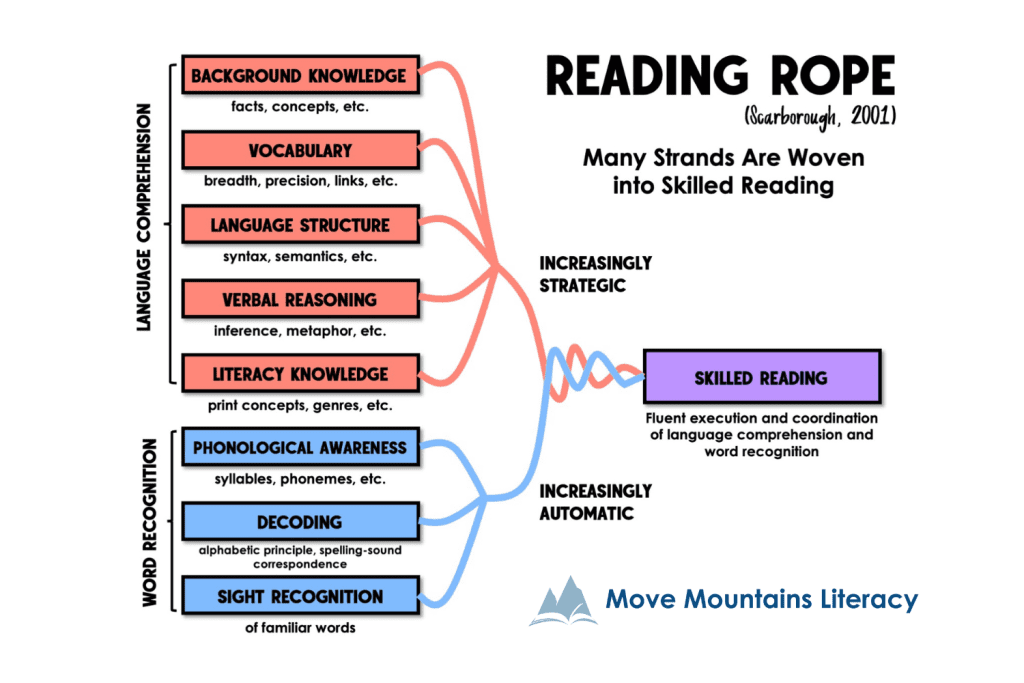Sound Wall vs Word Wall
Which is More Effective for Literacy Instruction?
As phonics makes its way back to the forefront of literacy instruction, teachers are discovering new practices to improve students’ reading and writing abilities. Many teachers have decided to revamp their sight word instruction by replacing their classroom Word Wall with a Sound Wall. Once you deepen your understanding of a Sound Wall, you’ll see that its capabilities go much further than housing high-frequency words. To learn more about the components of a Sound Wall, check out my blog post: “What is a Sound Wall?”
This blog post explains the similarities and differences between a Sound Wall and Word Wall. Whether you’re here out of curiosity or because your school requires you to implement a Sound Wall, I hope you’ll see why educators are leaving Word Walls behind.
One more note before we get started. Educators define the term “sight words” in a variety of ways. For this blog post, sight words refer to high-frequency words that we want students to recognize instantly. These words fall on a continuum ranging from regular (easily decodable) to somewhat irregular (following complex rules that aren’t as well known). Check out this FREE Fry’s Word List to learn more about sight words and their order of frequency.
4 Ways a Sound Wall Differs from a Word Wall
1. Word Walls arrange sight words in alphabetical order. Sound Walls organize sight words by sound.
It seems logical to organize words in alphabetical order. As adults, we file papers alphabetically, the contacts in our phones are in alphabetical order, stadium seating is alphabetized, and the list goes on. However, most kindergarten and first-grade students are just learning that alphabetical order exists. As teachers, we’re thrilled if they can say their ABCs without saying “elemeno” or omitting letters. Being able to recite the alphabet is only step one. Knowing their ABCs does not mean that students can navigate information organized in alphabetical order.
Displaying words in alphabetical order on a Word Wall makes sense to us, but to students, it seems random. They haven’t grasped the concept or mastered the skills that make alphabetizing an efficient way to organize words. If students cannot quickly locate words on a Word Wall, they may become discouraged from referring to it. How can we organize sight words in a way that makes sense to our youngest students?
Many school-aged children exhibit average hearing abilities. In other words, they can hear and distinguish the speech sounds in their native language. They respond to hearing their name, recognize their favorite TV show jingle, and choose what they want to eat for a snack out of a list of choices. Effective literacy instruction helps children understand that our language’s speech sounds (phonemes) are represented by letters (graphemes). Therefore, a Sound Wall organizes sight words by the sounds in the word, not the letter they start with.
Don’t get me wrong. Learning alphabetical order and developing alphabetizing skills are crucial. However, these skills can be taught in various ways using other visuals. Make alphabet instruction hands-on by incorporating alphabet arcs and plastic letters. Have students sort words on index cards as a class or in reading centers. Many teachers have an alphabet above their whiteboards. This display is a great visual for students to reference during activities that involve alphabetizing words and other dictionary skills. In short, use a Sound Wall to develop students’ word knowledge and other methods to practice alphabetizing.
2. A Word Wall shows the 26 letters in the alphabet. Sound Walls display the 44 phonemes in the English language and their corresponding graphemes (letters).
The English language contains 44 phonemes (speech sounds) but only 26 letters. Therefore, many letters stand for more than one sound. A Word Wall is limited in its ability to show the variety of sounds a letter represents. For example, the words “octopus,” “open,” “oil,” “out” and “or” would be listed under the letter O on a Word Wall. However, the letter o in these words represents five very unique sounds. The words “odd” and “open” demonstrate the short and long /o/ sounds. Additionally, the letters oi in the word “oil” and ou in the word “out” represent sounds referred to as diphthongs. Furthermore, the letters or are an example of an “R-controlled-vowel.” The letter r distorts the sound of letter o. A Sound Wall provides spaces for each of these distinct sounds.
Organizing words by the first letter hinders the teacher’s ability to group words by sounds in the middle or end of a sight word. For example, let’s say a teacher was working on digraph ng using the words “song,” “ring,” “hung,” and “tang.” These four words would be placed in four different spots on a Word Wall. Furthermore, a student might look for digraph ng or words with the /ng/ sound under the letter n on a Word Wall. In this situation, the Word Wall has failed to support the student. On the other hand, this same list of words could be grouped under the /ng/ sound on a Sound Wall. A student can identify the phoneme-grapheme correspondence to help them read or spell.
3. Word Walls are used for displaying sight words. Sound Walls display sounds (phonemes), letters (graphemes), sight words, and spelling patterns.
Word Wall instruction has been around for a while and looks very similar from classroom to classroom. The teacher introduces the new sight words on Monday, students practice these words during the week, and the teacher adds the sight words to the Word Wall on Friday. Students are expected to reference the Word Wall to read and spell words accurately. This massive display serves as a sort of trophy case, showing the words students have collected throughout the year.
Sound Walls, on the other hand, are much more versatile. A Sound Wall provides educators with a framework to teach speech sounds, and the graphemes (letters) used to represent those sounds. Classroom visitors would see more than a word list when admiring a Sound Wall. They could tell which letter-sound correspondences the students have learned in a kindergarten classroom. Visitors could see that students are working on consonant digraphs in a first-grade classroom. In second grade, visitors might see that students have learned “diphthong oi and oy” but haven’t been introduced to “diphthong ou and ow.”
Sound Walls also serve as a reference for previously taught spelling patterns. In addition to sight words, Sound Walls include “Sound Spelling Cards.” These cards are added to illustrate various ways to spell a phoneme. For example, under the long /a/ sound on a Sound Wall, students would see that long /a/ is spelled “a-e.” Once the students mastered this spelling pattern, the teacher would teach that long /a/ is spelled “digraph ay” in the final position of a base word. Another spelling rule is that the long /a/ sound is spelled with the letter “a” in an open, accented syllable. When students spell a word with the long /a/ sound, they could reference the Sound Wall to determine the correct spelling. To learn more about the rules that govern English spelling, get your copy of “Spelling Patterns: A Guide for Teachers” today!
Phonemes, graphemes, and spelling patterns may seem like lots of information to keep in one place. Remember that reading and spelling concepts are added to the Sound Wall over time. A Sound Wall helps consolidate your students’ letter-sound knowledge in one location. I love anchor charts and encourage teachers to use them in their instruction. Print-rich environments and visuals are great for educational settings. However, teachers quickly run out of wall space, and too many anchor charts can become clutter. Use a Sound Wall instead of having several posters and anchor charts around the classroom. This will decrease students’ time searching the classroom for the anchor chart or poster they need.
4. The visuals included on Word Walls are minimal, and they do not offer much support. Sound Walls have several visuals to help students with letter-sound correspondences.
Many Word Walls display the letters of the alphabet and the words. Some include a picture with the letter. The image usually represents one sound that the letter can make. Occasionally, the image does not reflect the letter sound accurately. For example, many alphabets use a xylophone picture for the letter “x.” In this instance, the letter “x” sounds like /z/. However, the pronunciation of the letter “x” is primarily /ks/. Take a close look at your classroom alphabet. Ensure that the pictures represent the most stable and frequent pronunciation of the sound each letter represents. It is also essential that the teacher produces the speech sounds accurately. This video from the Rollins Center for Language and Literacy is an excellent reference to the 44 phonemes in the English Language.
Like many Word Walls, a Sound Wall often displays an image for each sound and grapheme (letter and letter combinations). Including a picture can help students recall a sound. A Sound Wall also contains images that correspond with the various spelling patterns associated with each phoneme. Once again, the images must demonstrate the sound in its purest form. For example, a picture of an egg would not be a reliable representation of the short /e/ sound. Many people pronounce the “e” in “egg” like a long /a/ due to coarticulation. Coarticulation occurs when phonemes (sounds) are spoken close together, and the sound is distorted by the sound that comes before or after it. Use careful consideration when choosing images for letter-sound correspondences. Consider your students’ dialect and accent. Get your copy of “Sound-Spelling Cards” by visiting my TPT store today!
It is also common for a Word Wall to use letter proportion as a visual for students. The letters in a word are outlined to show differences in height and letters that hang below the baseline. This practice is often associated with the Three Cueing System. The Three Cueing system emphasizes memorizing the word as a whole unit and using pictures and context when students encounter an unfamiliar word. No research indicates that students can read unfamiliar words by attending to letter proportion in words they know. The Three Cueing system also breaks down when students encounter a text without pictures. Contextual support also doesn’t help when students are not familiar with the content, cannot read enough words to build context, or if the unfamiliar word is not uniquely tied to the context. Therefore, teacher efforts would be better spent teaching phoneme-grapheme correspondences while also teaching meaning. A Sound Wall lends itself well to this kind of instruction.
An effective Sound Wall includes photographs of a mouth articulating each sound. They also have an icon, such as a megaphone, to indicate a voiced sound. These images help students “see” and “feel” the sound. Using this multisensory approach (visual, tactile) to learning about speech sounds will help students remember and distinguish letter sounds when reading and spelling. There are many Sound Wall resources available. Be sure to check the credentials of the entity producing the materials. Learn more about the articulation of speech sounds by checking out “Sound Wall Mouth Pictures – Speech Articulation.”
The overall layout of a Sound Wall also serves as a visual. The vowel sounds are displayed in a V-shape. This shape is often referred to as “Vowel Valley.” As you move from left to right, the sounds move from the front of your mouth to the back. Additionally, your jaw begins to drop as you move down one side of the valley and close as you move up the other side. The consonants are grouped according to the sounds’ airflow and place of articulation (teeth, tongue, and lips). This design is a stark contrast to a Word Wall. Seeing the letters in alphabetical order does not help students determine the sound the letters represent. Use a Sound Wall to introduce phoneme-grapheme correspondences and support students with decoding and spelling accuracy.
Sound Wall Resources
Begin implementing a Sound Wall in your classroom today! The Sound Wall Bundle featured in this post includes mouth articulation photos, letter-sound picture cards, and spelling pattern picture cards. These products are also sold separately.
Want to learn more about Sound Walls? Visit the blog posts below:

